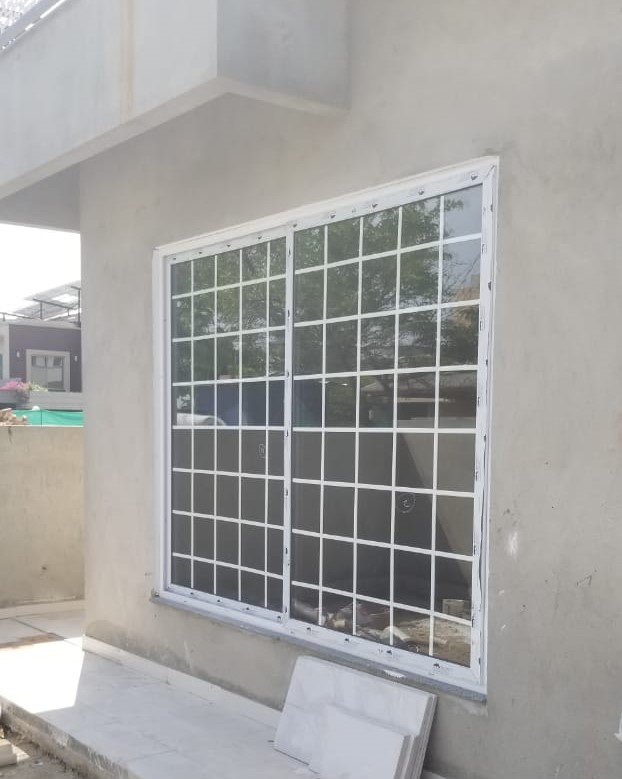Architectural and Engineering Glossary
H
Any one of several coefficients used in the calculation of heat transmission by conduction,convection,and radiation,through various materials and structures.Also see thermal conductance,thermal conductivity,thermal resistance,thermal resistivity,thermal transmittance.
Same as thermal transmittance.
Heating and cooling a solid metal or alloy in order to produce changes in its physical and mechanical properties.
A faintly blue-green plate or float glass,which absorbs 40% of the sun’s infrared (heat) rays and approximately 25% of the visible rays that pass through it;must be exposed uniformly to sunlight (without irregular shadows) to avoid cracking due to nonuniform heating.
A dry adhesive film that is rendered tacky or fluid by application of heat or of heat and pressure.
A joint in which heat is used to melt the end of a plastic pipe and the socket of a plastic fitting into which the pipe is inserted.When cooled,a solid joint is formed; can be used only with plain end plastic pipe and with fittings manufactured specifically for this purpose.
Premium Product & Services
Best products and services from our partners
See insulating glass.
See reflective glass.
See fusible link.
Any concrete which does not disintegrate when exposed to constant or cyclic heating at any temperature below which a ceramic bond is formed.
Glass able to withstand higher temperatures than usual because of its low expansion coefficient.
A special paint (or enamel) for use in the temperature range between about 250F and 750F (approx. 120C and 400C).
A method of joining plastic sheets or films by the simultaneous application of heat and pressure to the areas in contact.
Annealed glass:(a) that has been cut to size,(b) heated to near its softening point, and (c) then cooled faster than normal to place the outside surfaces and edges in compression and the interior in tension;is about twice as strong as annealed glass.
Same as tempered glass.
The space within a building with a positive heat supply.
See strip heater.
The capacity of a water heater to raise a given number of gallons per hour (liters per hour) by a specified number of degrees,for example,from 40 to 140F (4.4 to 60C);usually expressed in Btu per hour (kilowatts per hour);does not include the heat losses in the system which the water heater serves.
Same as degree day.
See heat load.
Any solid or fluid (such as water,steam,air,or flue gas) which is used to convey heat from a heat source (such as a boiler furnace),either directly or through a suitable heating device,to a substance or space being heated.
A system for heating a building or group of buildings;usually includes a boiler and a piping system with radiators,or a furnace,ducts, and air outlets.
The rate at which temperature is raised,as for example in an autoclave or kiln;usually expressed in degrees per hour.
See forced-air heating system,hot-water heating system,one-pipe system,radiant heating system,sealed hot-water system,solar heating system,steam heating system,warm air heating system.
See electric heating element.
Types of systems differ,but a basic system often includes an outside-air intake,chiller,preheater,dehumidifier,heating coil,humidifier,fans,duct work,air outlets,and air terminalsmechanical energy in the process;used in an air conditioner whose cooling cycle can be reversed so that it can function as a heater.
The upward movement of soil caused by expansion or displacement resulting from phenomena such as moisture absorption,the removal of overburden,the driving of piles,and the action of frost.
See loose-joint hinge.
See high-density concrete.
The moving of large masses of earth by deep cuts and fills.
A timber usually at least 4 in.(10 cm) thick and 8 in.(20 cm) or more in width.
A fine-grained soil composed largely of silt or clay.
A paint having a high viscosity.
According to OSHA:a scaffold designed and constructed to carry a working load not to exceed 75 lb per sq ft (367.5 kg per sq m).
Construction in which fire resistance is obtained by using wood structural members of specified minimum size and wood floors and roofs of specified minimum thickness and composition;by using bearing walls and nonbearing exterior walls of noncombustible construction;by avoiding concealed spaces under floors and roofs;and by using approved fastenings,construction details,and adhesives for structural members.
Aggregate of high specific gravity such as barite,magnetite,limonite,ilmenite,iron,or steel;used to produce high density concrete.
See high-density concrete.
A building 100 ft (30.5 m) in length or width;esp.the cella of the great temple of Athena,the Parthenon,at Athens.
A building having a hundred columns.
1.A door having its upper part hinged independently of its lower part,or one with an open or latticework panel.2.A latticed gate.
A metric unit of area equal to 10,000 square meters;approximately 21⁄2 acres.
Same as hexastyle.
1.A barrier or fence formed by bushes or small trees growing close together;2.A closely grown row of any kind of shrubbery.
Trees and shrubs in a row forming a fence which encloses or separates fields.
1.The lower end of an upright timber,esp.one resting on a support.2.The lower end of the hanging stile of a door.3.The floor brace for timbers that brace a wall.4.The trailing edge of the blade of a bulldozer,or the like.
Same as seat cut.
A stone at the bottom of a gate pier;used to mount the bottom hinge pin for the gate.
A steel fastener used to join a rafter to its tie beam.
1.A post or stanchion at the free end of the partition of a stall.2.A post to receive the hinges of a gate (either part of the gate or the stationary support).
1.The distance between two points aligned vertically.2.In buildings,the distance vertically from the average grade at front sides and/or rear of a building (or the average elevation of the curb or curbs of the streets faced by the building) to the average level of the roof.














